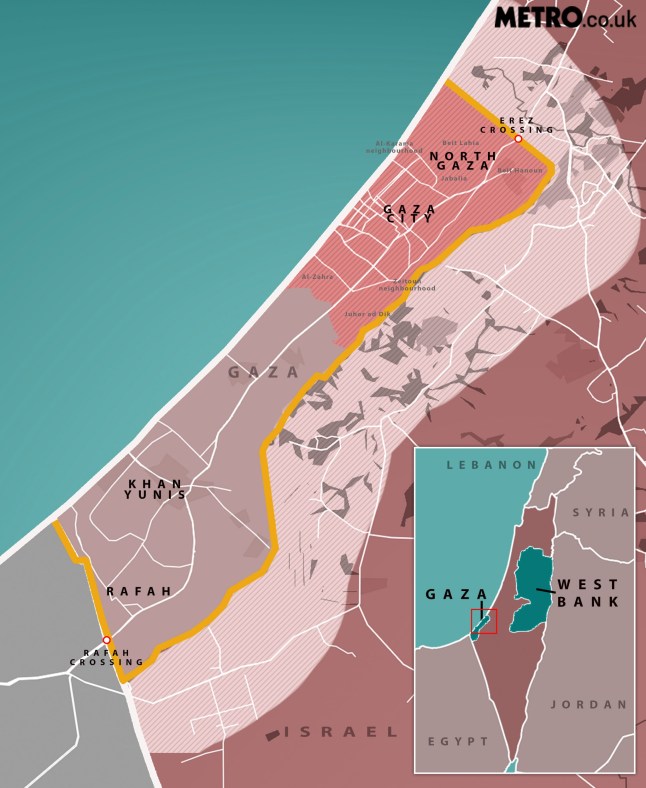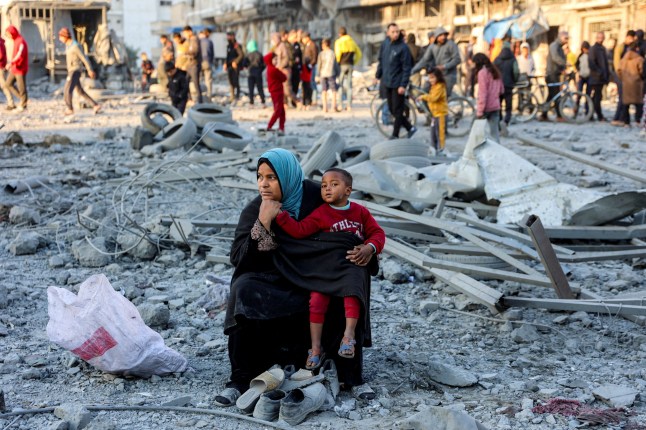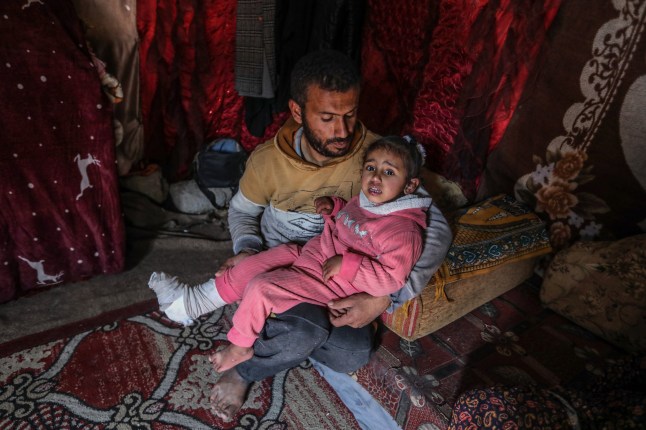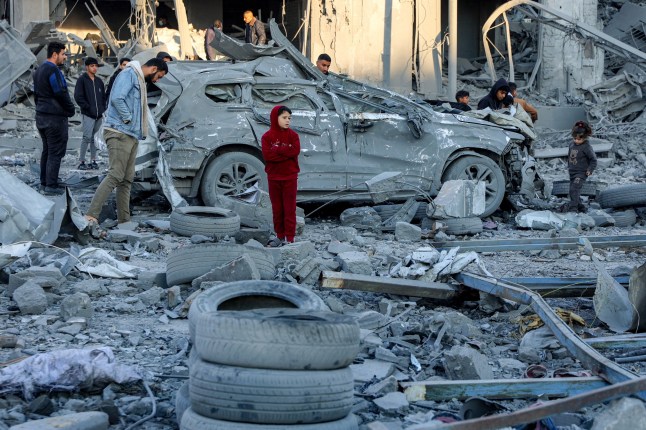Israel and Hamas reach ceasefire deal after 15 months of conflict
Israel has agreed on a ceasefire in Gaza 466 days after launching a full-scale war against Hamas.
Arab and US mediators had been working towards brokering a deal to put an end to all Israeli attacks and secure the release of scores of hostages still held in the besieged territory.
Both Israel and Hamas were given a final draft of a deal on Monday to end the war in Gaza, an official briefed on the negotiations said.
It is understood that the deal came after a ‘breakthrough’ in talks attended by envoys of both outgoing US president Joe Biden and Donald Trump.
A public announcement is yet to be made by Hamas and Israeli officials, but the president-elect said that a deal had been reached to release the hostages held in Gaza.
His post, made on his Truth Social platform, said: ‘We have a deal for the hostages in the Middle East. They will be released shortly.’
In the meantime, Israel continued to strike the Jenin Camp, in the West Bank.
On several occasions over the past year, US leaders had said they were on the verge of reaching an agreement, only to have talks stall.
What is in the ceasefire deal and what does it mean?
While a deal has finally been reached, it remains unclear when and how many displaced Palestinians would be able to return to their homes.
It’s also unclear whether the agreement would lead to a complete end of the war and the full withdrawal of Israeli troops from Gaza – both of which are key demands from Hamas.

Map of Gaza in its current form (Picture: MetroUK. Created with Datawrapper)
Other long term questions include who will rule the territory or oversee the reconstruction.
Still, the announcement offered the first sign of hope in months that Israel and Hamas may be winding down the most deadly and destructive war they have ever fought, a conflict that has destabilised the broader Middle East and sparked worldwide protests.
Here is everything we know about the deal, based on details shared earlier by an Israeli official and a Palestinian official.
Return of hostages
In the first stage, 33 people would be set free. The group includes children, women including female soldiers, men above 50, wounded and sick. Israel believes most are alive but has had no official confirmation from Hamas.
The first stage would last 60 days. If it proceeds as planned, on the 16th day from the deal taking effect, negotiations would start on a second stage during which the remaining living hostages – male soldiers and younger civilian males – would be released and the bodies of dead hostages returned.
In return for the hostages, Israel will free more than 1,000 Palestinians kept imprisoned for years, often without judicial process.
But Hamas fighters who took part in the October 7, 2023, attack on Israel would not be released.

A woman sits with a child with salvaged footwear amidst debris and rubble at the site of Israeli bombardment on a residential block in Jalaa Street in Gaza City (Picture: OMAR AL-QATTAA/AFP)

Lian Abu Obeida, a 3-year-old Palestinian girl who was wounded in various parts of her body in the Israeli attacks on Gaza, is pictured in Khan Yunis, Gaza (Picture: Abed Rahim Khatib/Anadolu)

Men and children stand next to a destroyed car amidst debris and rubble by a collapsed building at the site of Israeli bombardment on a residential block in Jalaa Street in Gaza City (OMAR AL-QATTAA/AFP)
Withdrawal of Israeli troops
The withdrawal of soldiers would be phased, with Israeli forces remaining in the border perimeter to defend towns and villages.
There would be security arrangements at the Philadelphi corridor bordering Egypt, along the southern edge of Gaza.
Unarmed North Gaza residents would be allowed back, with a mechanism to ensure no weapons are moved there.
Israeli soldiers will withdraw from the Netzarim corridor in central Gaza.
The Rafah crossing between Egypt and Gaza will start to work gradually, allowing the passage of those who are sick and humanitarian cases out of the enclave for treatment.
Increased aid
There would be a significant increase of humanitarian aid into the Gaza Strip, where the population is facing a humanitarian catastrophe.
Future governance of Gaza
Who will run Gaza after the war is one of the unknowns of the ceasefire deal.
It appears that the current round of talks has left the issue out of the proposal because of its complexity and the likelihood it would hold up a limited deal.
Israel has said it will not end the war leaving Hamas in power. It has also rejected administration of Gaza by the Palestinian Authority, the Western-backed body set up under the Oslo interim peace accords three decades ago that exercises limited sovereignty in the occupied West Bank.
It has also said from the beginning of its military campaign in Gaza that it will retain security control over the enclave after the fighting ends.
Read more similar news:
Comments:
comments powered by Disqus
































